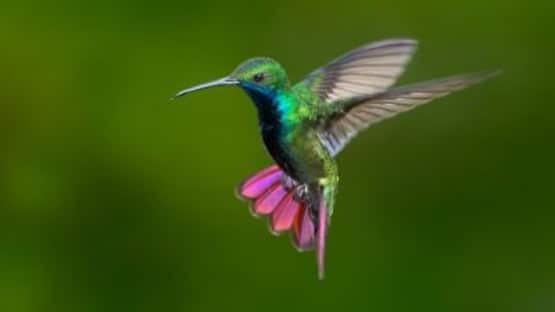
The populations of wild birds in North America are declining, according to recent data, and Virginia Tech is doing what it can to mitigate the loss.
In January, nearly 200 leaders in bird conservation came together at the National Conservation Training Center to talk about how to change the approach to bird conservation and ensure that the population declines of more than 100 “tipping point species” are reversed.
At the bird conservation conference was Ashley Dayer, an associate professor in the College of Natural Resources and Environment and a Global Change Center affiliated faculty member at Virginia Tech.
Bird populations in North America have declined by approximately 2.9 billion birds, a loss of more than one in four birds since 1970. The bird loss will continue to grow unless changes are made in our daily lives.
“Habitat loss due to agricultural intensification and urbanization is arguably the biggest threat to birds, along with climate change,” Dayer said. She points to cats and window collisions playing a role in bird deaths. Up to 1 billion birds die each year after hitting windows, data reveals, and cats are estimated to kill more than 2.4 billion birds annually in the U.S. and Canada.
Dayer understands the importance of birds to our environment, because her research focuses on social science applied to wildlife conservation, especially with regard to birds.
“They are often referred to as the ‘canary in the coal mine,’” she said. “Birds are indicators of environmental health for their own species, people and other wildlife. They also provide many important functions like eating pests and disease vectors like mosquitoes.”
Dayer’s recent research explores how bird sounds and observations enrich human life and make humans happier.
Ecological, social scientists and other conservationists are working vigorously to address the losses.
“Virginia Tech and Georgetown University are playing a leading role in the Road to Recovery: Saving Our Shared Birds effort,” Dayer said.
And everyone can help in reversing the wildlife bird population decline by following recommendations from Dayer:
- Keep cats indoors. They make great pets, but more feral and pet cats roam freely in nature. Cats instinctively hunt and kill birds, even when well fed.
- Make windows safer for birds. They perceive reflections in glass as a habitat they can fly into. Experts recommend installing screens or using film/paint to break up reflections.
- Grow native plants to make yards or land a better habitat for birds.
- Drink bird-friendly coffee to ensure tropical habitat is not lost. The coffee is certified organic, but its impact on the environment goes further than that. It is cultivated specifically to maintain bird habitats instead of clearing vegetation that birds and other wildlife rely on.
- Participate in studies about birds. Project Feederwatch and eBird provide these opportunities for the public and lead to important conservation science discoveries.
“It’s critical that we improve our approach to bird conservation by all working together to do our part. From researchers to land managers to members of the public we must take action to more effectively conserve tipping point species,” Dayer said. “Engaging people in the solutions is an important component to ensuring that we reverse declines in bird populations before it’s too late. I watched a bird species (the Po’ouli on Maui) go extinct early in my career, and I don’t want to ever experience that again.”










